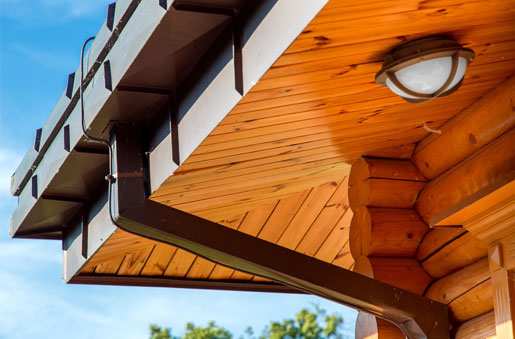Updated: December 2nd, 2024
Building a home is never complete without a roof. It shelters the whole property and protects the house from heavy rains and other weather conditions. While the roof is truly essential, you mustn’t forget to prioritize the use of gutters and downpipes as they’re responsible for keeping the rainwater away from the house’s structure, allowing it to be sturdy and well-built.
The rain gutter is on the edge of the roof where the rain passes through to be collected. After it goes through the gutter, it’ll redirect to the downpipe, leading to a drainage or rain barrel.
When it comes to installing gutters and downpipes, you don’t just install them in any way you want to. There are specific ways to maximize the use of its full potential in your home, allowing you to keep your family safe and sound. Listed below are the tips on how you can install gutters and downpipes successfully.
Purchase the right materials
The first thing you need to do when it comes to installing your gutters and downpipes is to purchase the right materials that can be found here. You need to note that no home is similar; what material works for others may or may not work for you.
You can choose various materials for your gutter and downpipes, such as aluminium, copper, galvanized steel, galvalume, zinc, and vinyl. Before you pick out the first thing you see, you have to see their strong and weak points. If you’re aiming for flexibility and cost-effectiveness, aluminium will work great. If you want durability that should last you long, copper is a perfect choice; however, you need to prepare for its hefty price tag. If the materials have you intrigued, you can explore in-depth articles on the topic by Jackson Carneiro.
Choose the right size
One of the most common mistakes people make when purchasing their gutter and downpipes is choosing the wrong size. Most people would buy a standard size to be on the safe side. However, you need to take different factors as it affects how your gutter and downpipes perform.
If you’re living in an area where the rainfall is usually intense, you might want to consider purchasing a bigger gutter and downpipe size to accommodate the water amount. If it’s typically blazing snow in your area, getting a wider gutter would prevent ice dams. If you’d like a more successful elimination of ice dams, having a heated gutter system would work wonders.
Space the gutter hangers near each other
When placing your gutter hangers, make sure they’re spaced for a maximum of 3 feet apart. If you choose to go any further, it might cause your gutter to sag, especially when it’s handling plenty of rainwater and snow. Additionally, if you’re living in colder climates, you should place the gutter hangers at least 2 feet apart for additional support so they’ll be able to carry the weight of snow and ice.
Steep the gutter
When installing your house’s rain gutter, you need to avoid making it flat and leveled as it’ll not allow the water to run through the downpipe. You need to ensure that you provide enough steep to enable the water to move smoothly, releasing its gathered water to the downpipe.
Moreover, you need to be careful with your angle. If your steep is too high, it might rush the water to flow down the downpipe and cause it to overflow, especially with heavy rains. You need to ensure that the gutter is at the right angle where the water runs in an adequate flow.
Placing your downpipes
When it comes to placing your downpipes, you should put them where the water on your gutter reaches its end. Ideally, the downpipe should lie on your wall and shouldn’t be placed bare in the open. When you allow it to run straight down, the water flow might be too intense, and people might bump into the pipe, which can cause further damage.

When placing your downpipes, you should ensure that it’s properly and securely placed on the gutter and has a proper attachment to the wall. You should avoid having gaps that can provide leaks. Lastly, the water should be going through 8 to 10 feet away from the home’s foundation. However, you can choose to allow the downpipe to be connected directly to a rain barrel for water harvesting.
Conclusion
Installing gutters requires precision and accuracy. You need to make sure that the steep is just right and the materials and size you use are appropriate for your house and your local area’s climate. You should ensure that you place them correctly and avoid any possibilities of leaks and blockage for a smoother flow.
With proper gutter and downpipes placement, you’ll be able to continue to enhance your home’s exterior, making it look better and attractive.


![Installing a Home Generator? Avoid These 5 Costly Mistakes [Expert Guide] Installing a Home Generator? Avoid These 5 Costly Mistakes [Expert Guide]](/blog/wp-content/uploads/installing-a-home-generator-avoid-these-5-costly-mistakes-expert-guide-150x150.jpg)



